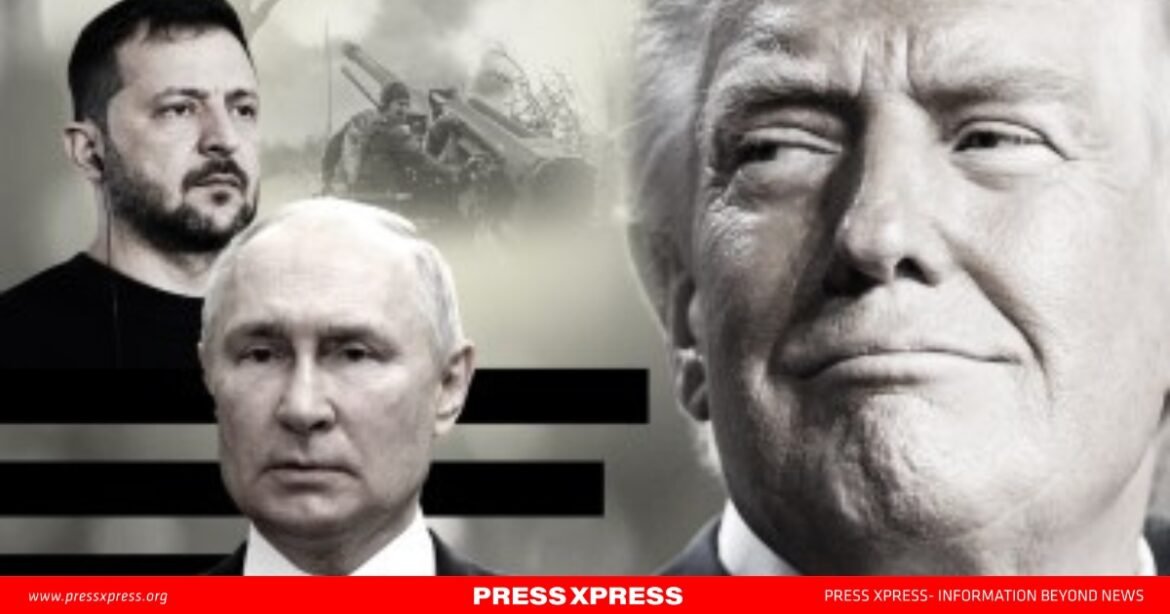President Donald Trump’s administration has temporarily halted U.S. military aid to Ukraine as part of a broader effort to reassess America’s role in the ongoing conflict and encourage peace negotiations with Russia. The decision was reportedly made during a tense Oval Office meeting where Trump and Vice President JD Vance pressed Ukrainian President Volodymyr Zelenskyy on the need for a diplomatic resolution.
The pause in aid has sparked intense debate in Washington, with some arguing it is a necessary step toward ending the war, while others warn it could weaken Ukraine’s ability to defend itself against Russian aggression.
Trump Administration Seeks a New Approach
White House officials say Trump remains committed to supporting Ukraine but is reevaluating the effectiveness of continued military assistance. A senior administration official told Fox News, “We are reviewing all aid to ensure it is being used effectively and not prolonging a conflict that could be resolved through negotiations.”
Trump has long been skeptical of what he calls “endless wars” and has pushed European allies to take on a greater share of the financial and military burden. The current pause in assistance reflects his belief that the U.S. should not be the sole backer of Ukraine’s war effort.
During his meeting with Zelenskyy, Trump reportedly urged the Ukrainian leader to consider diplomatic solutions and questioned why he had not pursued peace talks more aggressively.
Military Aid vs. Economic Interests
While military aid remains in limbo, the Trump administration is actively exploring economic agreements with Ukraine, including a potential minerals deal that could benefit both nations. Ukraine is home to vast reserves of rare earth minerals, critical for advanced technology and defense industries.
By shifting focus to economic partnerships, Trump appears to be positioning the U.S. for long-term strategic gains while simultaneously pressuring Ukraine to explore non-military solutions. A White House official described this as a “broader, smarter approach” that balances support for Ukraine with America’s own economic and security interests.
Trump’s Base Rallies Behind His Stance
Trump’s confrontation with Zelenskyy has energized his political base, reinforcing his “America First” doctrine. Supporters argue that after years of funding Ukraine’s war effort, it’s time for European nations to take the lead.
Prominent figures, including tech billionaire Elon Musk, have even called for a full U.S. withdrawal from NATO. On Monday, Musk posted on X: “The U.S. should leave NATO. Let Europe handle its own security.”
Meanwhile, Trump allies in Congress, such as Sen. Mike Lee (R-Utah) and Rep. Ana Paulina Luna (R-Fla.), have echoed calls for a reevaluation of America’s commitments abroad.
Yet, some warn that isolating Ukraine could backfire. Former U.S. Ambassador to NATO Ivo Daalder noted: “By refusing to offer security guarantees and insulting Zelenskyy, Trump is actually giving away leverage. Like it or not, Ukraine has a say in any peace deal.”
What’s Next?
As the war continues, the Trump administration faces a delicate balancing act—maintaining support for Ukraine while ensuring American resources are used effectively. The outcome of ongoing discussions could determine not only Ukraine’s future but also America’s broader foreign policy strategy in Europe.
For now, Trump’s message is clear: he wants a deal, not an indefinite conflict. Whether that strategy leads to a breakthrough or further divisions remains to be seen.


